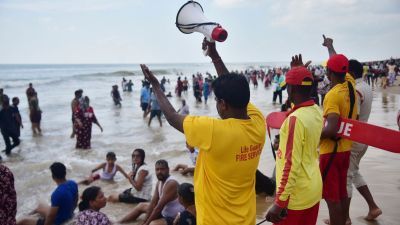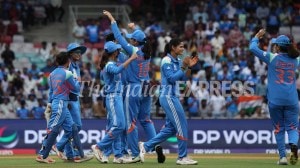Siwan killings may rewrite Laloo’s magic MY formula
PATNA, OCTOBER 23: The last rites have been performed, the bodies of the slain cremated. But the last word hasn't been said on the killing...

PATNA, OCTOBER 23: The last rites have been performed, the bodies of the slain cremated. But the last word hasn’t been said on the killings of Yadavs and Muslims in Siwan. For villagers in Tahira, where five Muslims were gunned down on October 17, memories are too fresh to be forgotten. And given the changing political equation, it could well happen again.
Ten year-old Rajen Singh points to the patches of blood where the five persons were killed. It still hasn’t been washed away, nor have Rajen’s memories of that night. He squats near the spot where six year-old Afroz was killed and rewinds. Uska gala kat diya tha, they slit his throat, he says.
The five victims belonged to one family; now, only Riazuddin is left. “Our dada (his grandfather, 90 year-old Abdul Rahman) had no enemies. He was sleeping when the assailants descended on him.”
He recounts how they escaped the gangsters’ bullets, by scaling the walls and crouching in the paddy fields, emerging only after the assailants left. The sight that greeted him was that of the five bodies of his family. “Satish Pandey’s men may have chosen this village because it is a Muslim dominated village and a base of RJD MP Sahabuddin,” he concedes.
The killings in Siwan are a pointer to the strain on Laloo Yadav’s Muslim-Yadav (MY) combination. A formula that has so far been electorally successful is now being rewritten, and Laloo’s reported kid glove treatment of the recent killings to bail out Shahabuddin hasn’t helped.
Yadavs still bristle when they recall that after the killings of 11 Yadavs at Mojahidpur — a pre-runner to the Tahira slaying — all attempts were made to keep Sahabuddin’s name out of the FIR. Yadavs fear that with growing Muslim consciousness, they will lose their identity.
Umesh Prasad, a retired government official, points to Babubnia Path, a road deep with potholes that’s difficult to negotiate. “Siwan’s politics are like this Babunia path. It’s full of intricate relations and complications.”
He says, “Huge sums of money have been coming in to Siwan through various channels. The railway yard is full of construction material, over a hundred trucks regularly transport goods. Siwan has emerged as a major trading centre for other districts.” Apart from this, remittances from the Gulf have also been increasing.
This economic boom of sorts is tightly controlled by politicians and criminal gangs. And in Muslim-dominated Siwan, the Yadavs have been itching to get a slice of the pie.
Even those Yadavs who consolidated their position under the Laloo regime are unhappy. Laxman Rai from Pratap Pur, another Sahabuddin stronghold, says, “Land relations are changing in villages. Muslims are now purchasing land, and poor Yadavs are facing problems. They don’t have the support of political leaders, and in most cases, it’s the CPI (ML) Liberation that’s helping them out.”
Amarnath Yadav, who’s the face of the CPI (ML) in Siwan, says, “There’s been a positive swing in our direction. I was defeated this election, but I mustered massive Yadav support. In the last Lok Sabha elections, we polled 1.24 lakh votes.”
The Muslim-Yadav equation is under strain, says Amarnath Yadav, and “Yadavs are fighting to keep their prestige intact.” An alternative may well be provided by the CPI (ML).






- 01
- 02
- 03
- 04
- 05

























